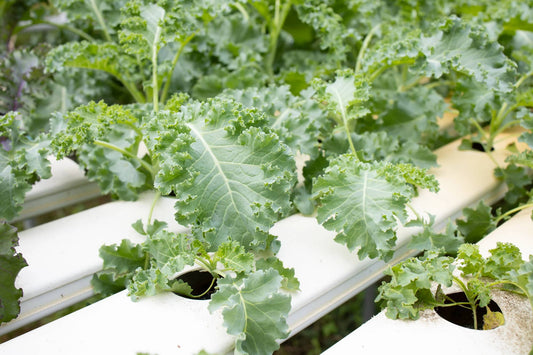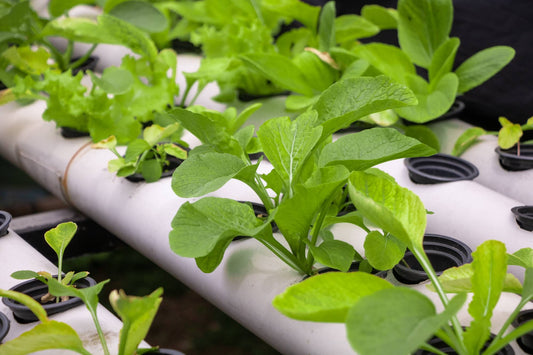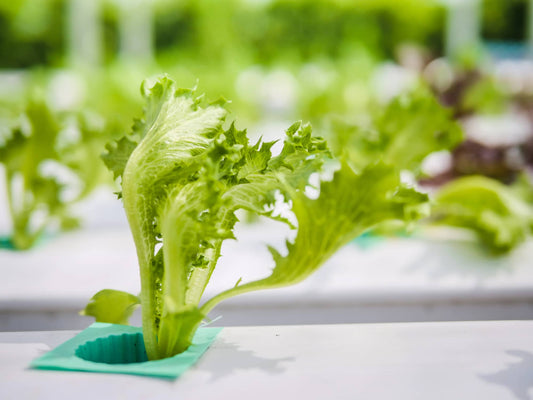Bell peppers make a rewarding and colorful addition to hydroponic systems, offering enhanced flavor, increased yield, and superior nutritional value compared to soil-grown varieties. Whether you’re a beginner or an experienced grower, understanding the optimal growing conditions is essential for success. This guide covers everything you need to know about cultivating hydroponic bell peppers, from environmental requirements to harvesting techniques.
Why Grow Bell Peppers Hydroponically?
Hydroponic bell peppers offer numerous advantages over traditional soil cultivation. By maintaining controlled environmental conditions, you can grow bell peppers year-round, ensuring stable yields, improved disease resistance, and optimized nutrient uptake. Hydroponic cultivation enhances fruit quality while eliminating many common challenges associated with soil-based gardening, such as pests and inconsistent nutrient availability.
Health Benefits of Bell Peppers
- Eye Health – Rich in beta-carotene and lutein, bell peppers help protect against age-related macular degeneration and support clear vision.
- Antioxidant Powerhouse – High levels of vitamin C and beta-carotene make bell peppers an excellent source of antioxidants, reducing oxidative stress.
- Immune Support – The combination of vitamins C and A strengthens the immune system, helping the body fight infections.
- Skin Health – Vitamin C promotes collagen production, improving skin elasticity and reducing signs of aging.
Growing Hydroponic Bell Peppers: Step-by-Step Guide
Growing Cycle
- Germination – Takes between 7–21 days.
- Seedling to Mature Plant – Requires 45–60 days.
- Flowering and Fruit Development – Takes 55–70 days.
- Harvest – Begins around 60–90 days from seeding.
Optimal Growing Conditions
- Season: Unlike soil-grown bell peppers that depend on warm months, hydroponic systems allow year-round cultivation by mimicking optimal temperature and humidity levels.
- Temperature: Bell peppers thrive in warm conditions with daytime temperatures of 70°F to 80°F (21°C to 27°C) and nighttime temperatures between 60°F to 70°F (15°C to 21°C).
- Humidity: A relative humidity of 40% to 70% is ideal. This prevents moisture-related issues while ensuring adequate transpiration and nutrient uptake.
- Sunlight and Indoor Light Requirements: Bell peppers require 6–8 hours of direct sunlight per day. For indoor hydroponic systems, use grow lights with a DLI (Daily Light Integral) of 20–30 mol/m²/day. Set grow lights for 14–16 hours per day to optimize photosynthesis and growth.
Nutrient and pH Requirements
Recommended EC (Electrical Conductivity):
- Seedling Stage: 2.0 mS/cm for early growth without stress.
- Vegetative Growth: Increase to 2.5 mS/cm for vigorous development.
- Fruiting Stage: Adjust up to 3.0 mS/cm to enhance fruit yield and quality.
pH Range:
- The ideal pH range is 5.5 to 6.5. A slightly acidic environment ensures efficient nutrient uptake for healthy growth and fruiting.
Essential Growth Practices
Support Structures: As plants grow, use stakes or cages to provide support. This helps prevent stem breakage when fruits become heavier.
Pruning Practices: Remove lower leaves to enhance air circulation and minimize fungal risks. Trim non-fruiting branches to direct energy toward larger, healthier peppers.
Balanced Feeding: Adjust nutrient formulas as plants shift from vegetative growth to fruiting. Decrease nitrogen while increasing potassium and phosphorus to encourage fruit development.
Pollination Assistance: Bell peppers are self-pollinating, but you can improve pollination by gently shaking the plant or using a small brush to transfer pollen within the flower.
Optimal Harvesting: Harvest peppers when they are firm and fully colored. While peppers can be picked at any stage, allowing them to ripen fully on the plant enhances flavor and nutrition. Regular harvesting promotes continued fruit production.
Common Bell Pepper Varieties
- Green – Mild, slightly bitter, often harvested before full ripening.
- Yellow – Sweeter than green peppers, rich in vitamin C.
- Orange – Balanced sweetness and crunch, high in beta-carotene.
- Red – Fully ripened, highest in antioxidants and vitamin A.
- Chocolate – Dark brown hue with a sweet, smoky flavor.
- Ivory – Cream-colored, mild in taste, and great for stuffing.
Conclusion
Growing bell peppers hydroponically offers numerous benefits, including enhanced yields and improved fruit quality. By maintaining optimal light, temperature, humidity, and nutrient levels, you can cultivate high-quality peppers throughout the year. Following best practices in support structures, pruning, and feeding ensures maximum productivity. Whether for home gardening or commercial hydroponics, mastering these techniques will lead to a bountiful harvest of delicious, nutrient-rich bell peppers.




